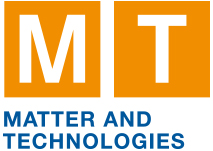Speaker
Description
The ALICE Collaboration is preparing for two major detector upgrades that will push the boundaries of silicon tracking. Following the LHC Long Shutdown 3 (2026-2030), the three innermost layers of the Inner Tracking System will be replaced with a novel, bent, ultra-light MAPS-based tracker: the ITS3. Six wafer-scale sensors, produced in a 65 nm CMOS process, will be thinned and bent into cylinders with radii as small as 19 mm. These sensors will be supported only by low-density carbon foam, leaving no additional material in the active region. This design achieves a record material budget of below 0.09% x/X₀ per layer. Large-area seamless sensors up to 26×10 cm² will be realized by stitching, with integrated power and signal distribution that removes the need for flexible printed circuits on the sensors and drastically reduces passive material. Looking further ahead (2036+), the Collaboration has proposed ALICE 3, a completely new apparatus designed to open novel avenues for studying the quark-gluon plasma and explore a wide range of QCD physics and beyond. The experiment will heavily rely on silicon-based technologies and will be built as an ultra-low-mass, high-performance tracker covering eight units of pseudorapidity. It will combine excellent pointing resolution, advanced particle identification, and high-speed readout using state-of-the-art technologies and innovative detection concepts. The heart of ALICE3 will house a MAPS monolith spanning an area of about 60 m². It builds directly on the developments pioneered for the ALICE ITS upgrade and ITS3. The innermost three layers, forming the Vertex Detector, will consist of wafer-scale bent sensors mounted on a retractable structure inside the beam pipe. With their close proximity to the interaction point, the secondary vacuum, and an unprecedentedly low material budget, it will deliver a track-pointing resolution better than 10 µm for particles with pT > 200 MeV/c. Surrounding this will be the Outer Tracker, six times larger than the present ITS2, posing major challenges in large-scale chip testing, module assembly, and integration of large-pitch sensors to avoid a very high channel density. This contribution will summarize the key R&D advances of ITS3, including stitched sensor development, thinning, bending, radiation hardness, and air-cooling, and outline how these achievements pave the way for the ambitious ALICE 3 detector. Here, the presentation will outline the core design concepts and the efforts in sensor development, mechanical integration, and modularisation, leading up to the Technical Design Report expected in 2026.

